Vertebrate Skeletal Anatomy II - The Skull
John Merck
Download cheat-sheet
Now for the nitty-gritty of the elements of the skull-roof. Among tetrapods, these have distinct identities and homologies. In evolutionary time, they can be:
- maintained in identifiable form,
- lost,
- lose their identity by fusing with adjacent elements.
As with last week, Greererpeton provides the starting point for their evolution.
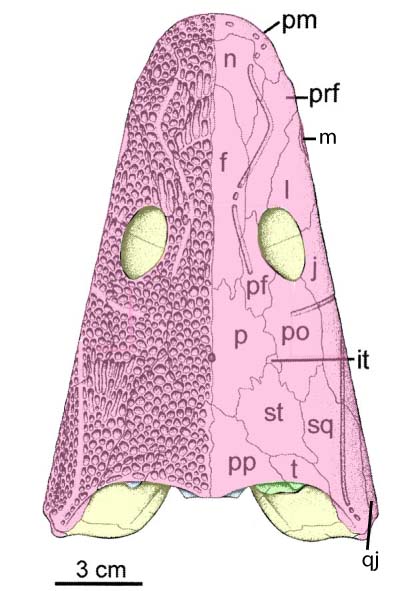
Greererpeton burckemorani
The images at right show dorsal and ventral views of the skull with jaws removed, and standard abbreviations of visible elements.
-
In dorsal view:
- f: frontal.
- it: intertemporal.
- j: jugal.
- l: lacrimal.
- m: maxilla.
- n: nasal.
- p: parietal.
- pf: postfrontal.
- pm: premaxilla.
- po: postorbital.
- pp: postparietal.
- prf: prefrontal.
- qj: quadratojugal.
- sq: squamosal.
- st: supratemporal.
- t: tabular.
- Midline:
- Nasals
- Frontals
- Parietals
- Postparietals
- Temporal series:
- Intertemporals
- Supratemporals
- Tabulars
- Prefrontals
- Lacrimals
- Jugals
- Postorbitals
- Postfrontals
- Maxillae
- Premaxillae
- Squamosals
- Quadratojugals
This complexity is easier to address if we break it down into regions:
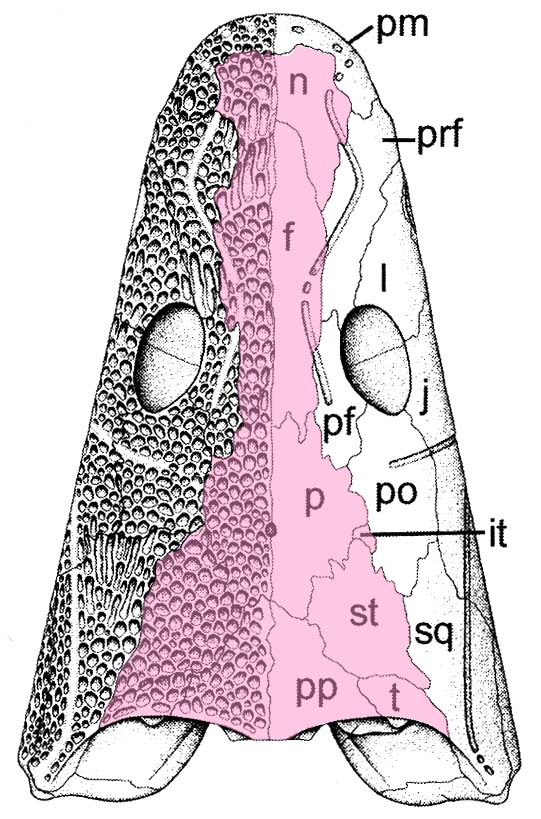
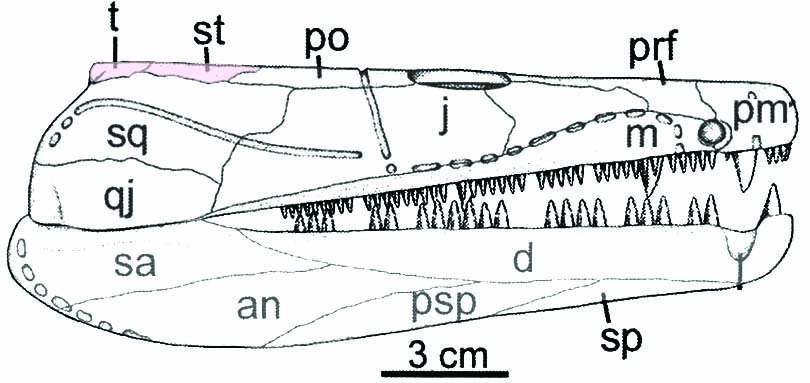
Greererpeton burckemorani
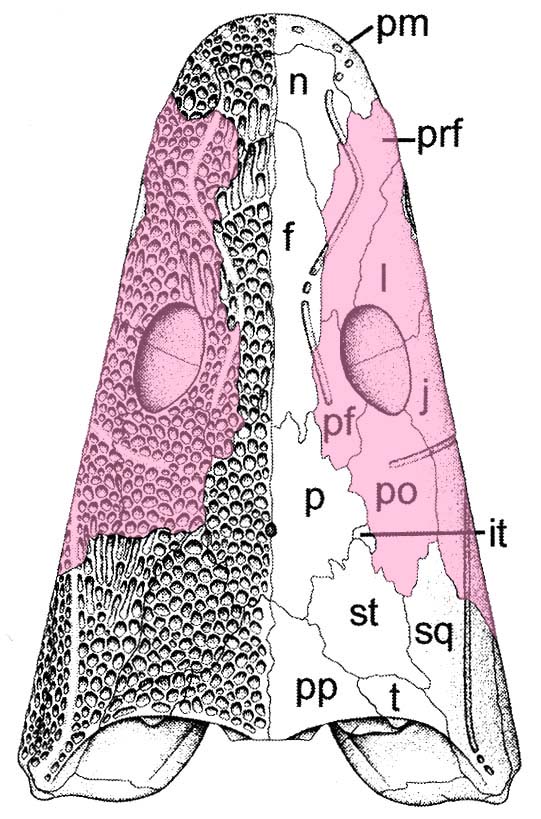
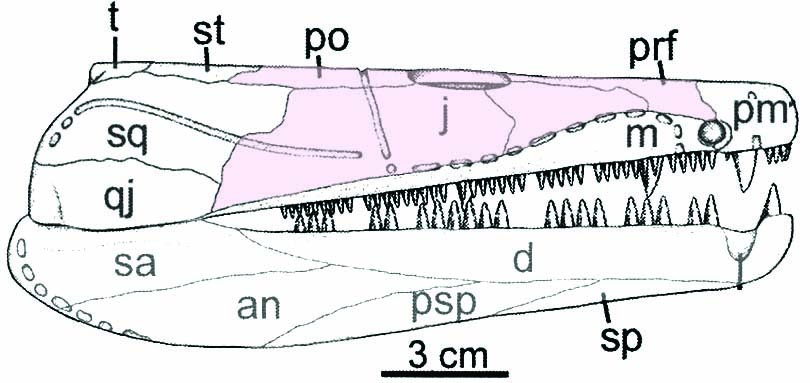
Greererpeton burckemorani
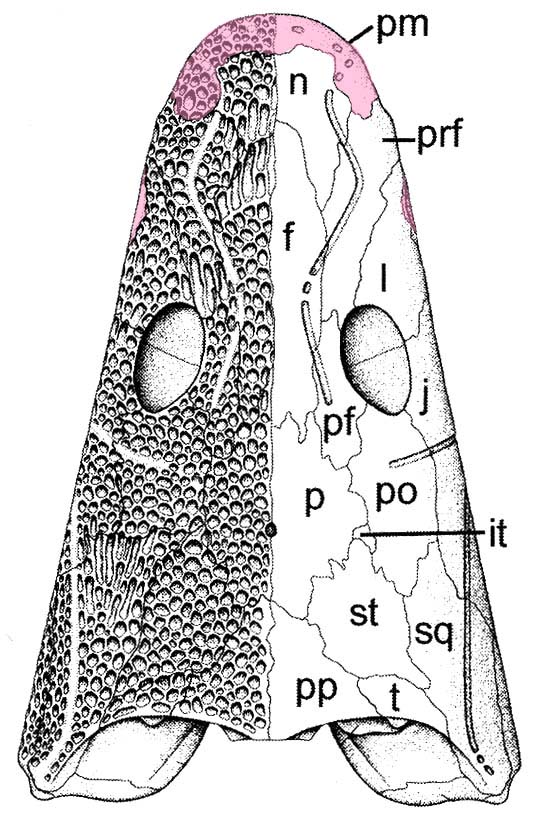
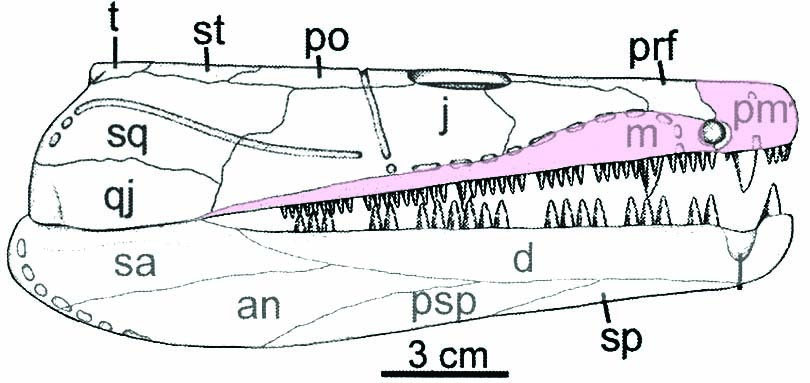
Greererpeton burckemorani
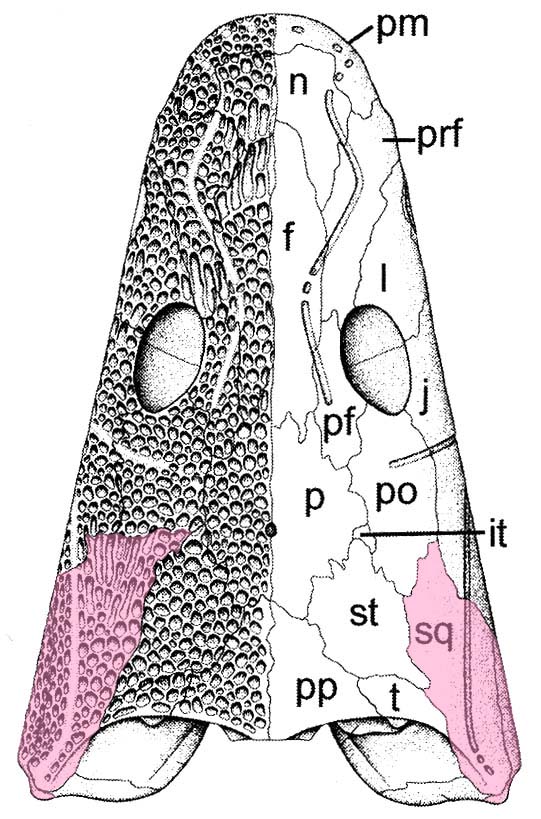
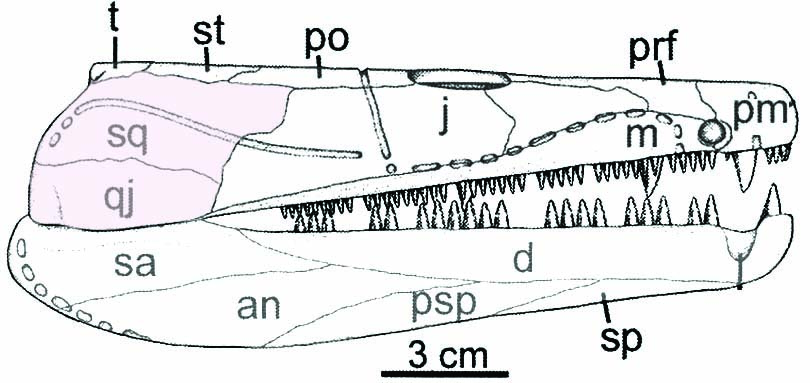
Greererpeton burckemorani
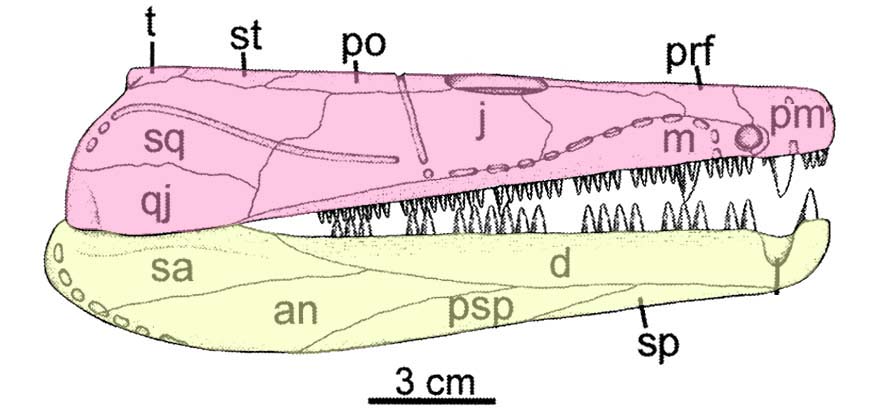
Greererpeton burckemorani
- Squamosals
- Quadratojugals
- Maxillae
- Premaxillae
In lateral view, these mandibular dermal elements are visible:
- an: Angular
- d: Dentary
- psp: Postsplenial
- sa: Surangular
- sp: Splenial

Greererpeton burckemorani
- an: Angular
- art: Articular (Endochondral ossification of Meckel's cartilage)
- co: Coronoids
- d: Dentary
- part: Prearticular
- psp: Postsplenial
- sa: Surangular
- sp: Splenial
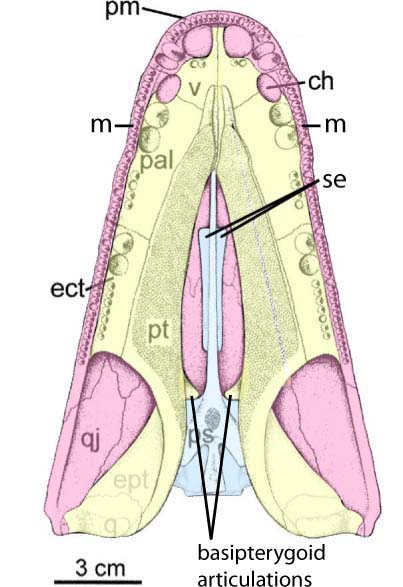
Greererpeton burckemorani
- q: Quadrate (Endochondral ossification of palatoquadrate forms jaw articulation with articular)
- ept: Epipterygoid (Endochondral ossification of Meckel's cartilage)
- ect: Ectopterygoid
- pal: Palatine
- pt: Pterygoid
- v: Vomer

Greererpeton burckemorani
- ps: Parasphenoid (lining ventral surface of braincase)
- Basioccipital pokes out posteriorly to the parasphenoid, forming the occipital condyle.
- The basipterygoid processes of the basisphenoid can be seen reaching toward the basipterygoid articulations.
Note: Often, the parasphenoid and basisphenoid fuse, yielding a parapasisphenoid.
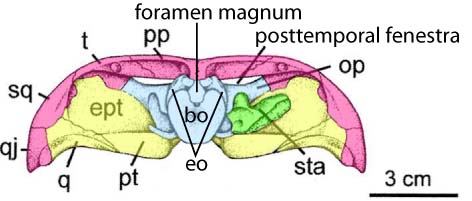
Greererpeton burckemorani
- bo: Basioccipital forms occipital condyle and floor of foramen magnum
- eo: Exoccipitals form sides of foramen magnum
- op: Opisthotics form sides of braincase and par occipital processes reaching to meet dermal elements of the skull roof.
Note: In amniotes, there is yet another mid-line braincase element, the supraoccipital which caps the arch formed by the exoccipitals and forms the dorsal margin of the foramen magnum. Greererpeton lacks this.
In green we see one hyoid arch element:
- sta: Stapes - ossification of the hyomandibula that in stem tetrapods like Greererpeton was load-bearing but gets repurposed in Tetrapod for sound transmission.
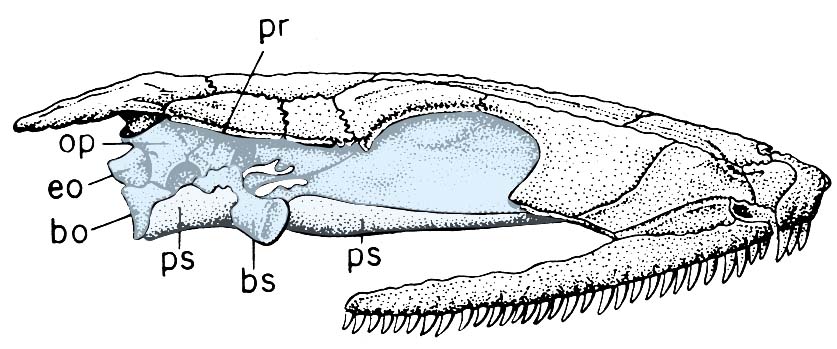
Paleoherpeton decorum
- bo: Basioccipital forms occipital condyle and floor of foramen magnum
- eo: Exoccipitals form sides of foramen magnum
- op: Opisthotics form sides of braincase and paroccipital processes reaching to meet dermal elements of the skull roof.
- pr: Prootic form sides of braincase anterior to paroccipital process. Together, the portico and opisthotic house the otic capsule.
- bs: Basisphenoid on midline anterior to basioccipital. Articulates with palatoquadrate through the basipterygoid articulation.
- se: Sphenethmoid (forming channel for olfactory nerves)
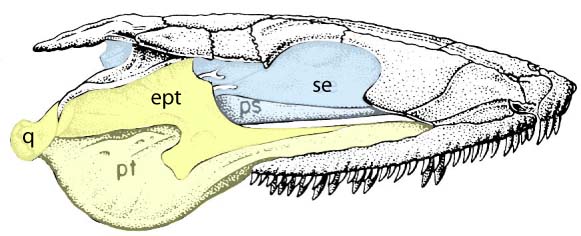
Paleoherpeton decorum
- q: Quadrate (with forms jaw articulation with articular)
- ept: Epipterygoid
- pal: Palatine
- pt: Pterygoid
- v: Vomer
Test yourself with Proterogyrinus scheelei:
Test yourself with extant vertebrates:
